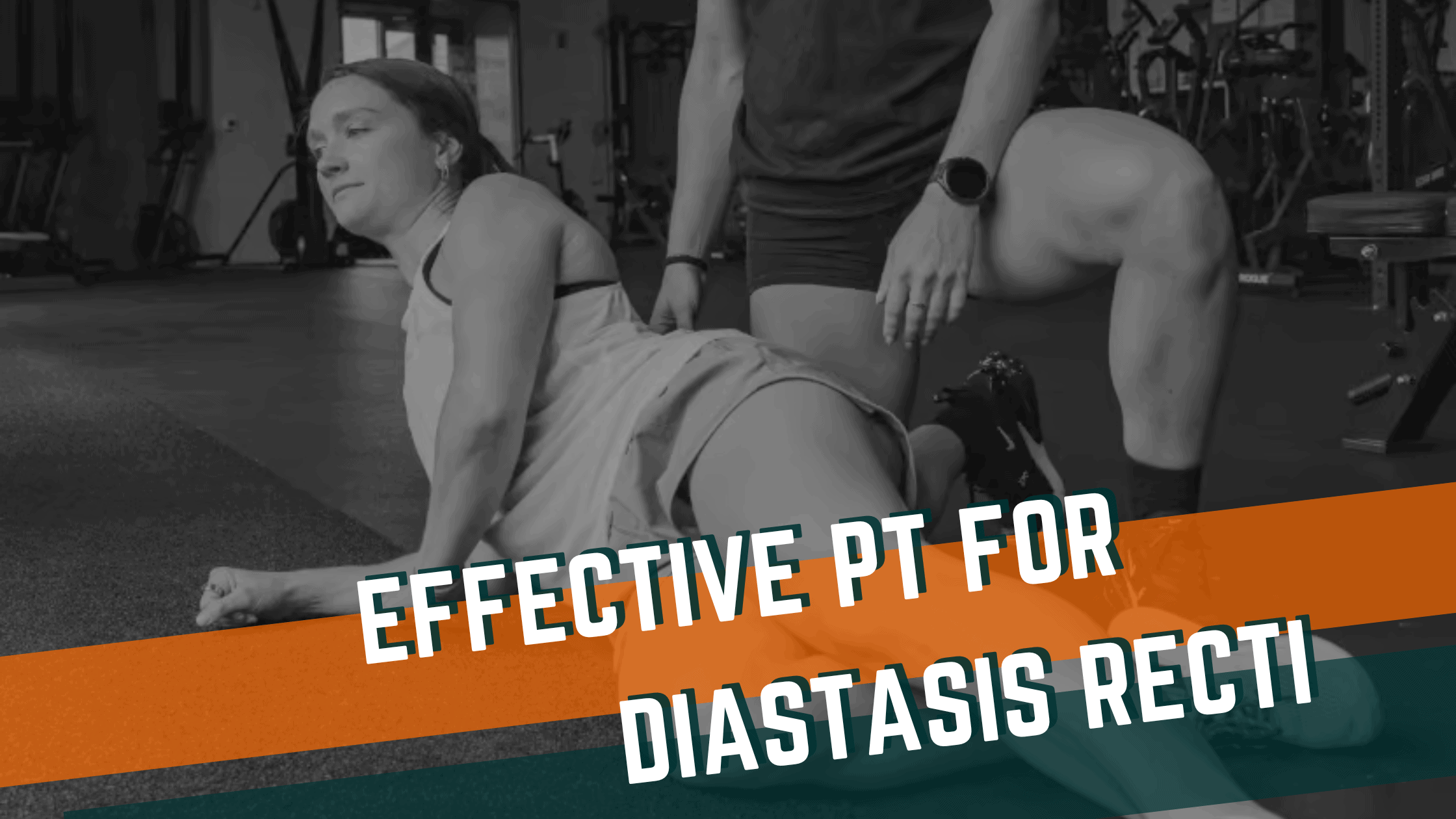
Diastasis recti (DR) is a condition when there is a separation of the abdominal muscles. It may lead to a bulge along the belly, abdominal pain, pelvic floor symptoms, or low back pain. It is commonly associated with pregnancy and postpartum women, but can also affect non-pregnant women and men. Physical therapy can help patients with DR manage their symptoms and improve their strength so that they can return to their regular activities without discomfort.
Diastasis recti is the separation of the abdominal muscles when there is a weakness, thinning, and widening of the linea alba. Diastasis recti following pregnancy is normal and the body’s way of making room for the baby to grow. It can also occur with rapid weight gain or when performing exercises incorrectly due to an increase in intra abdominal pressure. With DR, many people will complain of instability, pain, urinary incontinence, or bloating.
Physical therapy is a great way to treat diastasis recti and the symptoms that may accompany it. Physical therapists are musculoskeletal and movement experts, trained to help people get out of pain and back to what they love! Physical therapists are able to assess diastasis recti and patients’ ability to engage their deep core muscles. When assessing for DR you may find a separation, a bulge, or a “mommy pooch.” There is currently no consensus on classifying and diagnosing diastasis recti, however, improving deep core function and strength are key to improving symptoms related to diastasis recti. Every patient has different goals and expectations. A physical therapist will be able to create a personalized plan based on your symptoms and what you want to be able to do.
There is a large misconception that there are exercises that are bad for you if you have diastasis recti. In reality, this is not true. Once you’ve learned how to engage your deep core muscles, performing exercises, such as crunches, can continue to be great ways to strengthen your abdominal muscles. Many people worry when they see coning or doming in their abdomen while exercising. Again, this is not something to be feared, but is just a sign from our body that we are not optimally using our deep core muscles. Some common exercises that physical therapists will use to assist in teaching you how to engage the deep core muscles include pelvic tilts, transverse abdominis contractions, and modified planks. However, to fully strengthen the deep core, the exercises you do will need to match your goals. Check out this reel for some more information!
Some common mistakes people will make when trying to self treat their DR is performing more complex exercises too early or with poor form. They may also create increased intra abdominal pressure by holding their breath while using poor bracing strategies. Doing either of these may cause an increase in symptoms related to DR. Check out these two reels related to bracing strategies!
There is not a specific time frame to healing, but physical therapy will allow you to heal more quickly and get back to what you love sooner. Healing time frame depends on a variety of factors including: length and depth of separation, prior strength, prior activity level, and general health. Seeing progress in diastasis recti requires consistency and time to see strength changes. Even after you have seen the improvements in your symptoms, maintaining strength and coordination is key to remaining symptom free. You can do this by continuing to do the exercises your physical therapist prescribed you or by joining a gym of your choice. Yoga and pilates are popular options for women to continue working on core strength, but group fitness classes like CrossFit, Orange Theory Fitness, or Burn are also great alternatives!
If you are worried about having diastasis recti, it is important to work with a professional. Onward Physical Therapy has many locations with physical therapists who specialize in working with women and fitness athletes who may be experiencing these symptoms. Don’t hesitate! Reach out to Onward Physical Therapy today to find the right therapist for you!
Recent Articles
Why Early Intervention Physical Therapy Accelerates Your Recovery

What to Expect at Your First Physical Therapy Session?

How to Choose a Physical Therapist

The Top 5 Misconceptions About Physical Therapy

The Complete Guide to Physical Therapy

